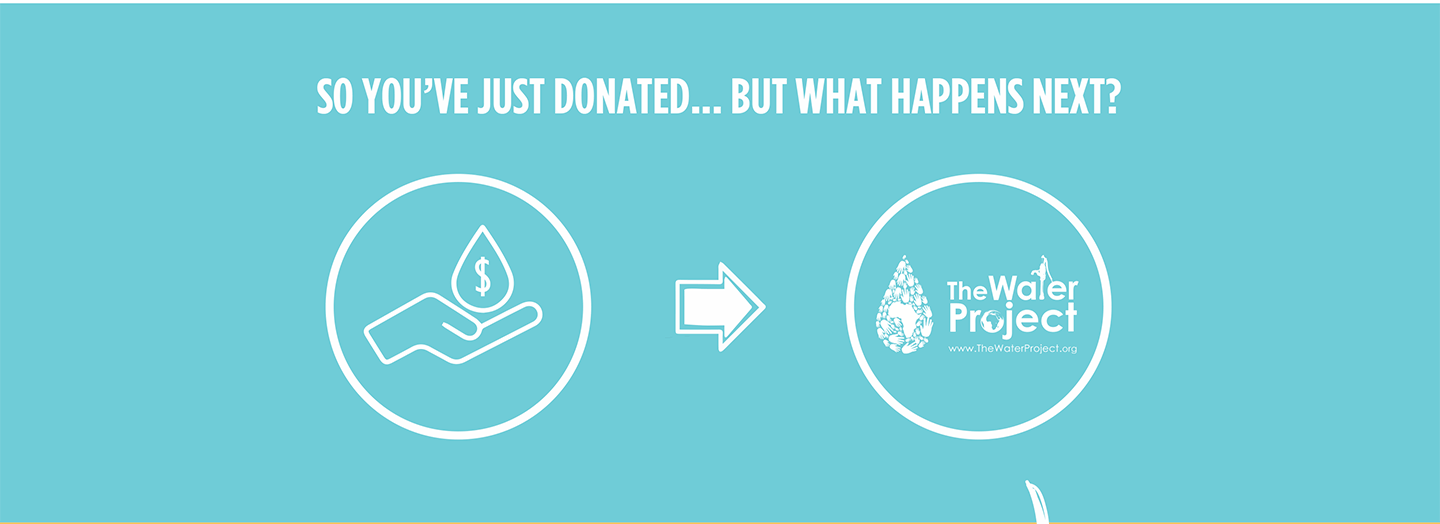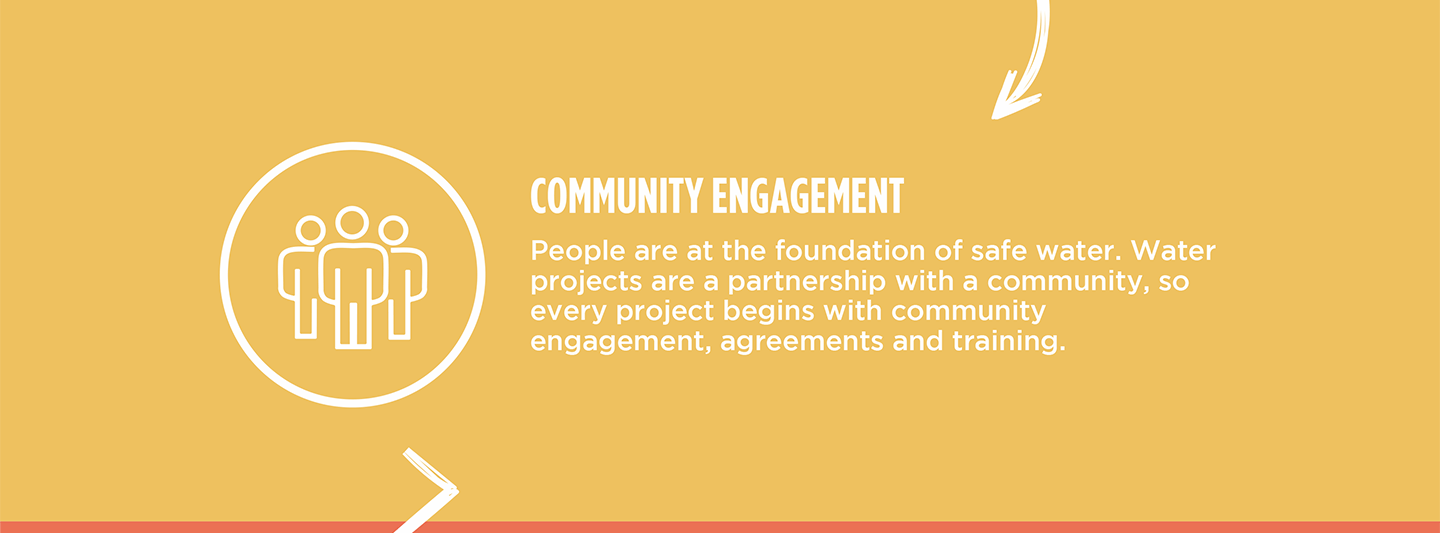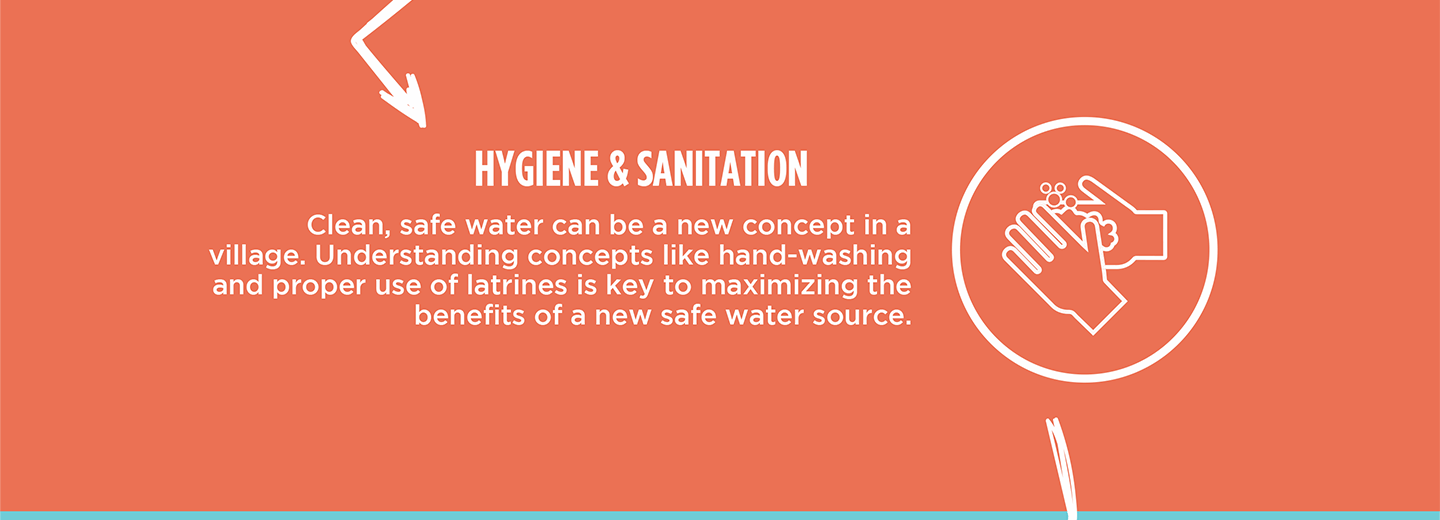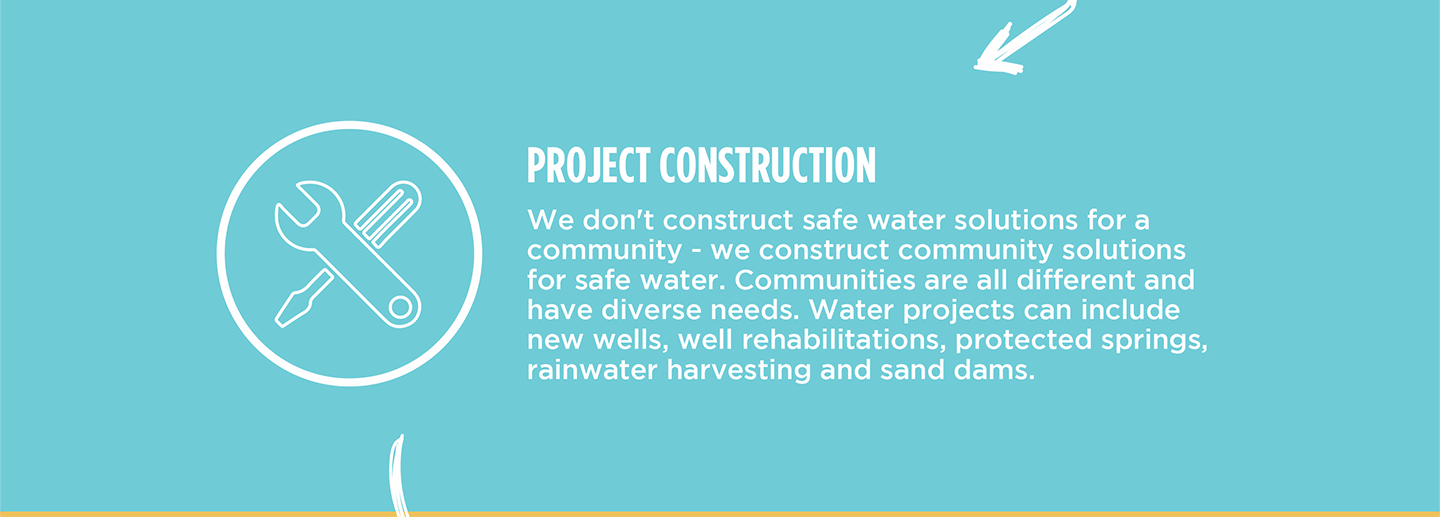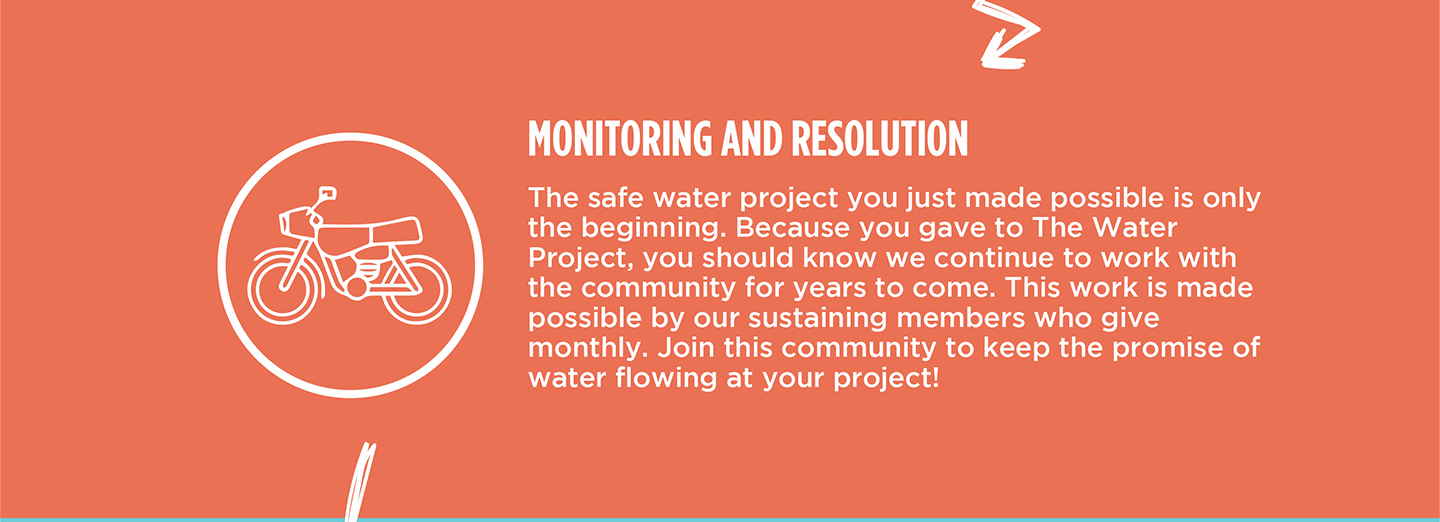The 210 community members who live in Eshikufu have tried to be proactive in solving their water crisis by protecting their Shikuku Spring, but without expertise, their attempts have failed. Yet, they have not given up and reached out to us for help. They're concerned about increasing typhoid, cholera, stomachache, and diarrhea among community members who drink the spring's contaminated water. Suffering from so many water-related illnesses steals their health and resources.
"Water is very important to me, and without clean water, life can be quite difficult. I use water for drinking, cleaning, cooking, and farming," shared 65-year-old Beatrice Anguba, a farmer.

Beatrice collects water from the unprotected spring.
"Life has been difficult since the water point broke. We get sick often, and the little amount [of income] we get, we spend it on medication. Our living standards and relationships have been affected too," she continued.
The spring's poor condition means the discharge pipe does not capture all the water underground, so the water that comes to the surface flows slowly. Filling even one container takes a long time. This is frustrating and causes community tension, especially when the spring is overcrowded.

Community members waiting to collect water.
"The longest time we have waited for water in the past is three hours. This usually happens during [the] dry season when neighboring communities, including [a] neighboring school, come here to fetch water," said Beatrice.
Long wait times put everyone on edge. Each person waiting for water sacrifices the time needed for other crucial activities, such as school, work, or caring for their families. That stress has caused tension in the community, making life even harder.
"I usually send my grandchildren to go for water, but they overstay at the water point, and sometimes, they come back without water and cry. They claim to be harassed by elders who prevent them from fetching water whenever it's their turn. The queues cause conflicts, which results in disunity among the spring users."

Beatrice uses water stored in her home.
By helping protect the spring, Beatrice and other community members will be able to quickly collect safe-to-drink water and hopefully restore some of the peace within the community.
Steps Toward a Solution
Our technical experts worked with the local community to identify the most effective solution to their water crisis. They decided to safeguard the existing flowing spring.
Spring Protection
Springs are natural water sources that originate from deep underground. As water travels through various layers of the earth, it undergoes a natural filtration process, making it cleaner and safer to drink. To protect these spring sources from contamination, we construct a waterproof cement structure around layers of clay, stone, and soil. This design channels the spring water through a discharge pipe, facilitating easier, faster, and cleaner water collection.
Chlorine Dispenser
As an extra measure towards water quality safety, uniquely engineered chlorine dispensers are installed at all of our spring protection projects so community members can treat their water with pre-measured doses of chlorine. The chlorine treats any residual contamination and stays active for two to three days, ensuring water stays safe to use even when stored at home. Chlorine delivery and maintenance of the dispensers are part of our ongoing community support.
Community Education & Ownership
Hygiene and sanitation training are integral to our water projects. Training is tailored to each community's specific needs and includes key topics such as proper water handling, improved hygiene practices, disease transmission prevention, and care of the new water point. Safe water and improved hygiene habits foster a healthier future for everyone in the community. Encouraged and supported by the guidance of our team, a water user committee representative of the community's diverse members assumes responsibility for maintaining the water point, often gathering fees to ensure its upkeep.

 Protected Spring
Protected Spring
 Rehabilitation Project
Rehabilitation Project





























